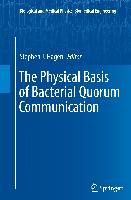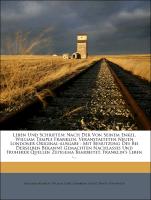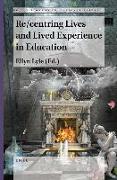- Start
- The Physical Basis of Bacterial Quorum Communication
The Physical Basis of Bacterial Quorum Communication
Angebote / Angebote:
This book aims to educate physical scientists and quantitatively-oriented biologists on the application of physical experimentation and analysis, together with appropriate modeling, to understanding and interpreting microbial chemical communication and especially quorum sensing (QS). Quorum sensing describes a chemical communication behavior that is nearly universal among bacteria. Individual cells release a diffusible small molecule (an autoinducer) into their environment. A high concentration of this autoinducer serves as a signal of high population density, triggering new patterns of gene expression throughout the population. However QS is often much more complex than simple census-taking. Many QS bacteria produce and detect multiple autoinducers, which generate quorum signal cross talk with each other and with other bacterial species. QS gene regulatory networks operate in physically complex environments and respond to a range of inputs in addition to autoinducer signals. While many individual QS systems have been characterized in great molecular and chemical detail, quorum communication raises fundamental quantitative problems that increasingly attract the attention of physical scientists and mathematicians. Key questions include: What kinds of information can a bacterium gather about its environment through QS? How do QS regulatory networks employ feedback and nonlinearity, and how do they modulate or manage gene regulatory noise? How does QS function in complex, spatially structured environments such as biofilms? What physical and chemical factors in the environment ultimately constrain diffusion-based communication? What types of physical phenomena, such as motility and hysteresis, can be facilitated by QS? How can we manipulate and interpret QS behavior in complex physical environments and artificial structures? Previous books and reviews have focused on the microbiology and biochemistry of QS. With contributions by leading scientists and mathematicians working in the field of physical biology, this volume examines the interplay of diffusion and signaling, collective and coupled dynamics of gene regulation, and spatiotemporal QS phenomena. Chapters describe experimental studies of QS in natural and engineered or microfabricated bacterial environments, as well as theory and modeling of QS on intracellular as well as extracellular, macroscopic length scales. · Analyzes bacterial quorum sensing from a physical and mathematical perspective · Explores the role of spatiotemporal diffusion, physical environment, regulatory dynamics, stochasticity and information in quorum communication · Includes contributions from leading experimentalists, theoreticians, engineers and modelers· Takes a physical science and engineering approach to the subject, but will appeal to anyone with an interest in physical biology
Lieferbar in ca. 20-45 Arbeitstagen




